September Itinerary Ideas in Japan (Summary)
Table of contents
Sightseeing spots that can be visited with the proposed itinerary
Food menu and seafood that can be eaten in the proposed itinerary
Day 1 (Accommodation in Sendai City, Miyagi Prefecture)
Day 2 (Accommodation in Sendai City, Miyagi Prefecture)
Day 3 (Accommodation in Kesennuma City, Miyagi Prefecture)
Day 4 (Accommodation in Morioka City, Iwate Prefecture)
Day 5 (Accommodation in Morioka City, Iwate Prefecture)
Day 6 (Accommodation in Hakodate City, Hokkaido)
Day 7 (Accommodation in Sapporo City, Hokkaido)
Introduction
This is a summary of Japanese itinerary ideas for September, 7 nights and 8 days. This itinerary idea summarizes what tourist destinations we can visit and what meals we can eat.
Sightseeing spots that can be visited with the proposed itinerary
- 2 World Heritage Sites (Hiraizumi Temples, Gardens and Archaeological Sites Representing the Buddhist Pure Land , the Jomon Prehistoric Sites in Northern Japan)
- 3 National treasures (Osaki Hachimangu, Zuiganji Temple, Chusonji Konjikido)
- 17 Important cultural properties of the country (Sendai Toshogu Shrine, Mutsu- Kokubunji Yakushido, Shiogama Shrine, Yotokuin Tamaya, Entsuin, Godaido, Kanrantei, Bank of Iwate Red Brick Building, Former 90th Bank Main Store Main Building, Koiwai Farm, Hokkaido University Faculty of Agriculture Second Farm, Former Hokkaido Government Office Building, Hokkaido University Faculty of Agriculture Botanical Garden, Former Sapporo Court of Appeal Building, Former Sapporo Agricultural School Performance Hall, Hohei Kan, Hassoan)
- National Important Art Object (Ue no hashi)
- National scenic natural monument (Genbikei)
- 100 Landscapes of Japan (Geibikei)
- National natural monument (Ishiwarizakura)
- 100 selections of Japanese city parks (Morioka Castle Site Park)
- Japan’s Top 100 Castles (Sendai Castle, Morioka Castle)
Food menu and seafood that can be eaten in the proposed itinerary
- “100 selections of local cuisine“ selected by the Ministry of Agriculture, Forestry and Fisheries
Miyagi Prefecture “Harako-meshi” ,”Zunda mochi”
Iwate Prefecture “Wanko soba”, “Hittsumi”
Hokkaido “Chanchan-yaki”, “Ishikari Nabe”, “Jingisukan”
- “Local dishes loved by nation“ selected by the Ministry of Agriculture, Forestry and Fisheries
Miyagi Prefecture “Gyutan-yaki”
Iwate Prefecture “Morioka Reimen” , “Morioka Jaja-men”
Hokkaido “Uni-Ikura-don”, “Soup curry”
Seasonal seafood in September
Miyagi Prefecture (sardine, bonito “Kinka bonito”, salmon, pacific saury, bigeye tuna “Sanriku Shiogama Higashimono”, abalone, “Kinka mackerel”, scallop, bluefin tuna , marlin, Japanese flying squid and mahi-mahi : common dolphinfish
Iwate Prefecture (yellowtail, salmon “Iwate’s autumn salmon (salmon roe)”, pacific saury, abalone, Japanese flying squid, kelp and “Rikuzentakata clinocardium california : Ezoishikage kai”)
Hokkaido (yellowtail, flatfish “Pacific coastal Matsukawa-garei”, salmon, pacific saury, atka mackerel, Japanese flying squid, kelp and “Tomakomai no Hokki (Sakhalin surf clam)”)
Day 1 (Accommodation in Sendai City, Miyagi Prefecture)
Lunch
We will eat local cuisine “Harako-meshi” and dessert “Zunda mochi”.
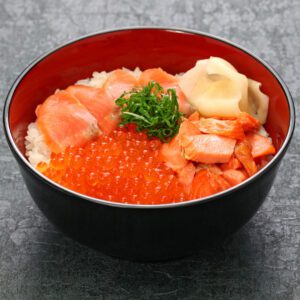
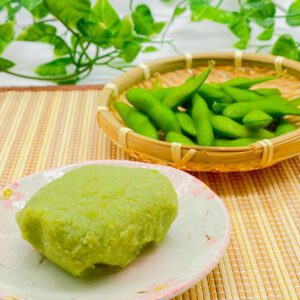
- Zuihoden
It is a mausoleum of Date Masamune, the founder of the Sendai domain.
- Sendai Castle Ruins
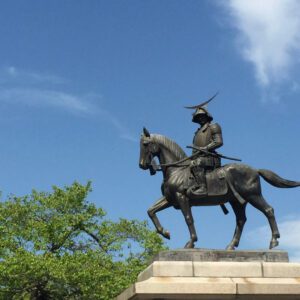
One of Japan’s Top 100 Castles by the Japan Castle Association.
- Osaki Hachimangu
Osaki Hachimangu is designated as a national treasure building as the only remains in Japan during the Azuchi-Momoyama period.
- Walk around Jozenjidori
- Sendai Toshogu
The deity of the Sendai Toshogu Shrine is Ieyasu Tokugawa. It is a national important cultural property.
- Mutsu-Kokubunji Yakushido
Mutsu-Kokubunji Yakushido was rebuilt in 1607 by Date Masamune. It is a national important cultural property.
Dinner
We eat bonito, sardine, salmon, pacific saury, tuna, and abalone, which are seasonal seafood in September.The brand of bigeye tuna is “Sanriku Shiogama Higashimono” (season is September-December). “Kinka bonito” (seasonal May-September), “Kinka mackerel” (seasonal September-January), and scallop (seasonal September-May) are also in season.
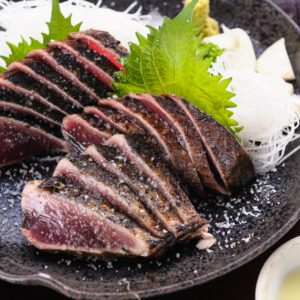
Day 2 (Accommodation in Sendai City, Miyagi Prefecture)
- Shiogama Shrine
Shiogama Shrine has been revered as the Tohoku guardian, Mutsunokuni Ichinomiya. It is a national important cultural property.
- Yotokuin tamaya
It is a mausoleum of Date Masamune’s wife, Megohime (Yotokuin). It is a national important cultural property.
- Zuiganji Temple
Zuiganji Temple is a Zen Buddhist temple belonging to the Rinzai sect Myoshinji school. It is a national treasure because it is a valuable building of Momoyama art.
- Entsuin
It is a national important cultural property.
- Godaido
Godaido belongs to Zuiganji Temple. The current building was built by Date Masamune in 1604 and is the oldest surviving Momoyama building in the Tohoku region. It is a national important cultural property.
Lunch
We eat bonito, sardine, salmon, pacific saury, tuna, and abalone, which are seasonal seafood in September. The brand of bigeye tuna is “Sanriku Shiogama Higashimono” (season is September-December). “Kinka bonito” (seasonal May-September), “Kinka mackerel” (seasonal September-January), and scallop (seasonal September-May) are also in season.
Oysters on the Matsushima coast are famous, but the season is from October to March.
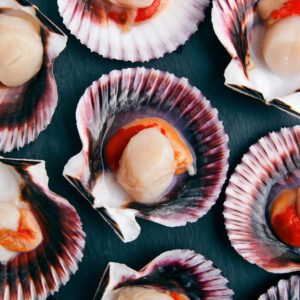
- Matsushima Island Tour Boat
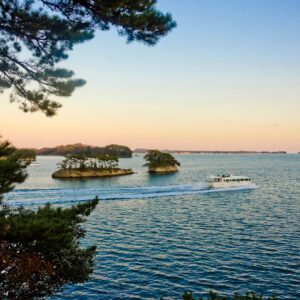
- Stroll around Fukuurajima
- Kanrantei
Tokonoma and fusuma paintings are important cultural properties of the country.
- View of Matsushima Bay from a hill
Shintomiyama or Sokanzan

Dinner
We will eat “Gyutan-yaki” from “Local dishes loved by nation” in Miyagi prefecture.
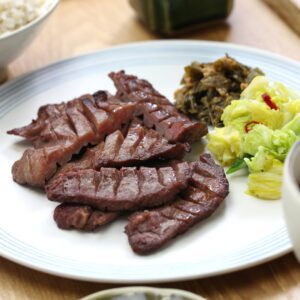
In 2 days, Miyagi Prefecture’s “local cuisine” “Harako-meshi” and “Zunda mochi”, “Local dishes loved by nation” “Gyutan-yaki”, September seasonal seafood (bonito, sardine, salmon, pacific saury, tuna, and abalone, “Sanriku Shiogama Higashimono” , “Kinka bonito”, “Kinka mackerel” are all eaten. I wish we could eat oysters on the Matsushima coast (seasonal is October-March).
Day 3 (Accommodation in Kesennuma City, Miyagi Prefecture)
- Ruins of Muryokoin
It is a world heritage site of the temple ruins built by Mr. Fujiwara Hidehira.
- Chusonji Temple (Konjikido (Golden Hall), Main Hall)
Chusonji Konjikido is the only one that has survived since the 12th century. Konjikido is the only national treasure in Iwate prefecture. Chusonji is a World Heritage Site.

- Hiraizumi Cultural Heritage Center
This facility introduces Hiraizumi in an easy-to-understand manner. Admission is free.
- Kinkeisan
It is a mountain of faith of Ohshu Fujiwara. It is a World Heritage Site.
- Kanjizaiō-in ruins
It is a temple ruin and is a World Heritage Site.
- Motsuji Temple
The cathedral ruins are left in good condition. It is a World Heritage Site.
- Takkoku no Iwaya
It is a rock cave where Shogun Sakanoue Tamura Maro enshrined Bishamonten.
- Genbikei
It is a national scenic natural monument.
The specialty of Genbikei is the “Cuckoo Dango” from the Cuckoo shop. The dumplings and tea come down the rope in the basket. 2021 is scheduled to open until the end of November.
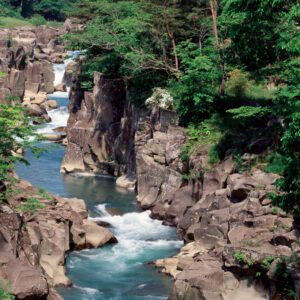
Lunch
At Ichinoseki, we can eat “Hattozen” at “Kuramoto Restaurant Sekinoichi” (a 10-minute walk from JR Ichinoseki Station).
“Hatto” is also known as “Hittsumi” and is a local dish of Iwate prefecture.
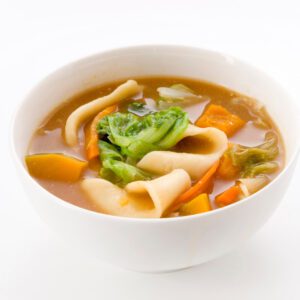
After lunch at Ichinoseki, head to Geibikei. Geibikei is one of the 100 Landscapes of Japan.
- Geibikei boat ride
Geibikei is one of the 100 Landscapes of Japan. It is a national historical site scenic spot natural monument.
We can hear “Geibi Oiwake” sung by the boatman on the boat.
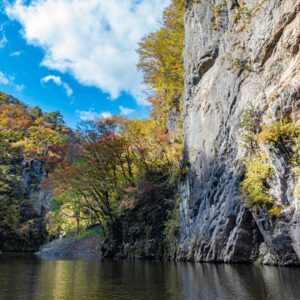
Dinner
We will stay and have dinner in Kesennuma. We eat bonito, sardine, salmon, pacific saury, tuna, and abalone, which are seasonal seafood in September.
The brand of bigeye tuna is “Sanriku Shiogama Higashimono” (season is September-December). “Kinka bonito” (seasonal May-September), “Kinka mackerel” (seasonal September-January), and scallop (seasonal September-May) landed at Ishinomaki fishing port are also in season.
In Kesennuma, bluefin tuna (seasonal September / October), marlin (seasonal July-September), Japanese flying squid (seasonal May-September), and mahi-mahi : common dolphinfish (seasonal July-September) are also seasonal fish.
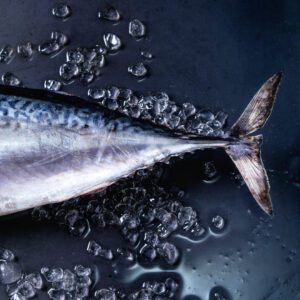
The seasonal fish and shellfish in September in Iwate Prefecture are yellowtail, salmon, pacific saury, abalone, Japanese flying squid, and kelp.
In Iwate prefecture, flatfish also seems to be in season from September to October.In addition, the rainbow trout (cultured) “Hachimantai salmon” in Hachimantai, which can be eaten all year round, seems to be very delicious.
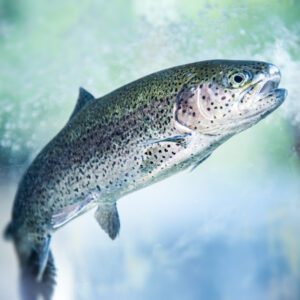
The salmon is covered with Miyagi prefecture, but “Iwate’s autumn salmon (salmon roe)” is selected as the autumn “pride fish” of Iwate prefecture selected by Japan Fisheries Cooperatives. The season for “Iwate’s autumn salmon (salmon roe)” is September-January.

In addition, “Rikuzentakata’s clinocardium californicus : Ezoishikage kai” has been selected as the summer “pride fish” in Iwate Prefecture. The season is from July to October, so we can eat deliciously in September as well.
Day 4 (Accommodation in Morioka City, Iwate Prefecture)
- Takata Matsubara Memorial Park
The Takata Matsubara Memorial Park in Rikuzentakata City is also closed from 18:00 on August 13 (Friday) until Iwate Prefecture’s own state of emergency is lifted. If the park continues to close in September, you can go to Geibikei on the second day of Iwate prefecture, and on the first day of Iwate prefecture, you can go around Hiraizumi more slowly.


Lunch
We eat seasonal seafood, yellowtail, salmon, pacific saury, abalone, Japanese flying squid, and kelp. However, what we definitely want to eat in Rikuzentakata is the “Rikuzentakata Clinocardium california : Ezoishikage kai”, which is the summer “pride fish” of Iwate Prefecture selected by Japan Fisheries Cooperatives, which I introduced last time. The season is from July to October.
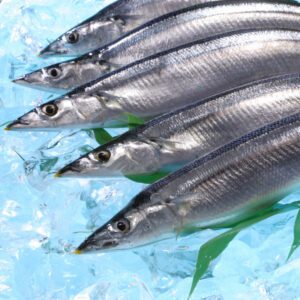

In Iwate prefecture, flatfish also seems to be in season from September to October. Also, the rainbow trout (cultured) “Hachimantai salmon” from Hachimantai City seems to be very delicious.
“Iwate’s autumn salmon (salmon roe)” has been selected as the “pride fish” for autumn in Iwate prefecture. The season for “Iwate’s autumn salmon (salmon roe)” is September-January.



Dinner
We eat “Morioka-reimen : cold noodles” in Morioka. Morioka-Reimen is a “Local dishes loved by nation” selected by the Ministry of Agriculture, Forestry and Fisheries. I think it is offered at many yakiniku restaurants.


Day 5 (Accommodation in Morioka City, Iwate Prefecture)
- Morioka Castle Ruins Park
Morioka Castle has been selected as one of Japan’s Top 100 Castles by the Japan Castle Association. It has been selected as one of the 100 best city parks in Japan.
- Sakurayama Shrine
It was founded in 1749.
- Bank of Iwate Red Brick Building
It was built in 1911 as the former Morioka Bank, designed by Tatsuno Kingo and Kasai Manji Architects. It is a national important cultural property.
- Morioka Takuboku / Kenji Seishunkan (former 90th Bank Main Store Main Building)
It was built in 1910 by Tsutomu Yokohama, an architect from Morioka City. It is a national important cultural property.
- Konyacho Banya and Iwate Prefecture Public Hall
Konyacho Banya was built as a branch of the Morioka Fire Brigade in 1913 and was used as a banya. It is said to be typical of wooden Western-style office architecture during the Taisho era.
The Iwate Prefectural Public Hall was built in 1927 to commemorate the marriage of Emperor Showa.
- Morioka Hachimangu
Known for the Southern Yabusame Shinto ritual.
- Ue no hashi (Ue no bridge)
The upper bridge is a bridge over the Nakatsugawa River in 1609. It is designated as a national important art object.
- Ishiwarizakura
Cherry blossoms grow on a huge granite with a circumference of 21 meters. Of course, the cherry blossoms are not in bloom in September. It is designated as a national natural monument.
- Takuboku Newlyweds House
This is the only surviving samurai residence in Morioka, where the newlywed Takuboku Ishikawa lived for about three weeks.
Lunch
We eat “Morioka Jajamen”. It is a “local dishes loved by nation” of Iwate prefecture selected by the Ministry of Agriculture, Forestry and Fisheries.


- Koiwai Farm
The buildings built on the premises of the Uemaru cowshed are designated as national important cultural properties.
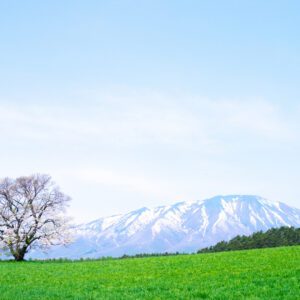

Dinner
We will eat “Wanko soba”, a local dish of Iwate prefecture.
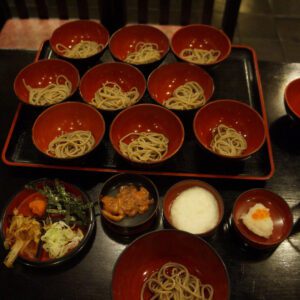

In 3 days, Iwate Prefecture’s “local cuisine” “Wanko soba” and “Hittsumi”, “local dishes loved by nation” “Morioka Reimen” and “Morioka Jaja-men”, seasonal seafood in September, yellowtail, salmon, pacific saury, abalone, Japanese flying squid, and kelp, “Rikuzentakata clinocardium california : Ezoishikage kai” are all eaten.
Day 6 (Accommodation in Hakodate City, Hokkaido)
Lunch
Eat “Uni-ikura-don : sea urchin salmon roe bowl”. It is Hokkaido’s “local dishes loved by nation” announced by the Ministry of Agriculture, Forestry and Fisheries. In addition to “Uni-ikura-don”, if you find the seasonal Hokkaido seafood of yellowtail, flatfish, salmon, pacific saury, atka mackerel, Japanese flying squid, and kelp on the menu, let’s eat them.
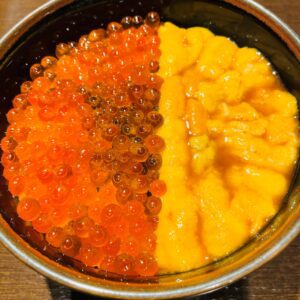

- Ofune Ruins
It is a World Heritage Site that is a constituent asset of the Jomon Prehistoric Sites in Northern Japan.
- Kakinoshima Ruins
It is a World Heritage Site that is a constituent asset of the Jomon Prehistoric Sites in Northern Japan. There is Hakodate Jomon Culture Exchange Center. Commentary guides will be provided to those who wish (free of charge, in Japanese). Advance reservation required.
Dinner
We will eat “Chanchan-yaki”, a local dish of Hokkaido selected by the Ministry of Agriculture, Forestry and Fisheries.
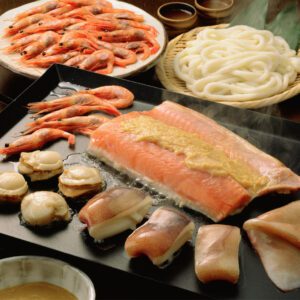

It would be great if we could eat “Pacific Coastal Matsukawa-garei : Matsukawa-flatfish”, which is selected by Japan Fisheries Cooperatives as “Pride Fish” in autumn in Hokkaido, in Hakodate. It is also branded under the name “Oucho”. It is landed from Erimo Town in Hokkaido to Minamikayabe in Hakodate City, and the season is from September to November.
Of course, if we find the seasonal Hokkaido season of September, such as yellowtail, flatfish, salmon, pacific saury, atka mackerel, Japanese flying squid, and kelp, let’s eat them.
- Mt. Hakodate Observatory
We will be traveling by bus from Hakodate Station. Due to the legal regular inspection of the Hakodateyama Ropeway, a temporary bus will be operated from the temporary platform at the trailhead from September 20th to November 7th, 2021.
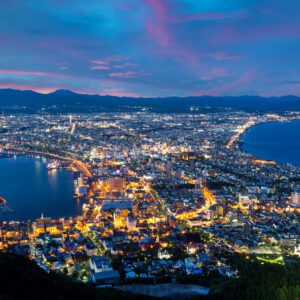

Day 7 (Accommodation in Sapporo City, Hokkaido)
Breakfast (early morning)
Eat “Uni-ikura-don : sea urchin and salmon roe bowl” at Hakodate-Asa-Ichi : Morning Market (business hours from May to December from 5:00 to 14:00, but it depends on the store). It is Hokkaido’s “local dishes loved by nation” announced by the Ministry of Agriculture, Forestry and Fisheries.
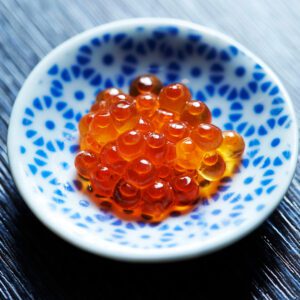

If you don’t like Uni-ikura-don for two consecutive days, there are plenty of things you can eat at the morning market, such as sea urchin bowl. If the menu includes yellowtail, flatfish, salmon, pacific saury, atka mackerel, Japanese flying squid, and kelp, which are in season in Hokkaido in September, let’s eat them.
Lunch
Umi-no-eki (Sea Station) Plat Minato Ichiba (Market)
What we want to eat at “Plat Minato Ichiba” is “Tomakomai no Hokki : Sakhalin surf clam” (seasonal July-November). It is a summer “pride fish” in Hokkaido selected by Japan Fisheries Cooperatives.


We also want to eat “Pacific Coastal Matsukawa-garei : Matsukawa-flatfish” which has been selected as the “Pride Fish” for autumn in Hokkaido. It is also branded under the name “Oucho”. It is landed from Erimo Town in Hokkaido to Minamikayabe in Hakodate City, and the season is from September to November.
In addition to “Tomakomai no Hokki” and “Pacific Coastal Matsukawa-garei : Matsukawa-flatfish”, the menu includes yellowtail, flatfish, salmon, pacific saury, atka mackerel, Japanese flying squid, and kelp, which are in season in Hokkaido in September. If you have one, let’s eat it.
- Upopoy (National Ainu Museum)
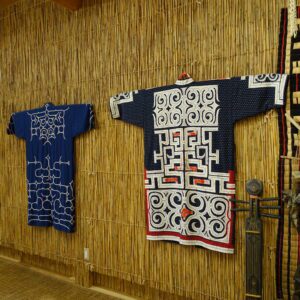

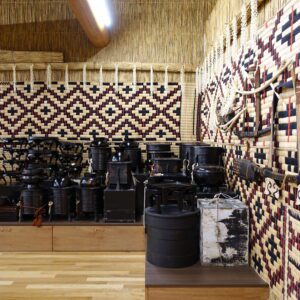

“Upopoy” means “singing together in a large group” in the Ainu language. It is a facility for learning about the culture of the Ainu people, who are the indigenous people of Hokkaido. You can also enjoy Ainu songs, dances, and musical instrument performances.
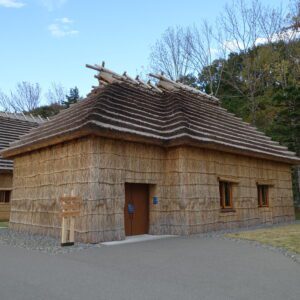

Dinner
We will eat “Ishikari Nabe”, a local dish of Hokkaido. Of course, if we find the seasonal Hokkaido season of September, such as yellowtail, flatfish, salmon, pacific saury, atka mackerel, Japanese flying squid, and kelp, let’s eat them.
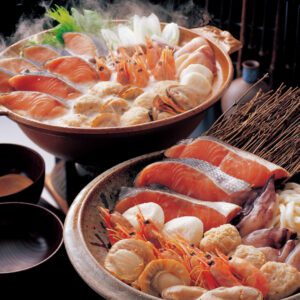

- JR Tower Observatory T38
From the skyscrapers of JR Sapporo Station, we can see the night view of Sapporo. Meals can be a bit hectic, but if we eat around Sapporo Station, we’ll be in time for the final admission at 19:30. (There is a shortening of business hours due to the state of emergency, the last admission for normal business is 21:30)
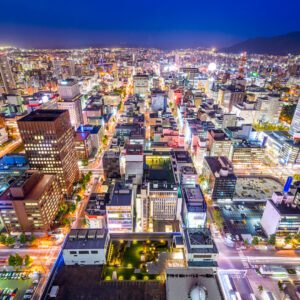

There is a view restroom with the concept of “occupying an overwhelming sense of liberation”. Designed by Junko Kobayashi, a leading Japanese toilet architect.
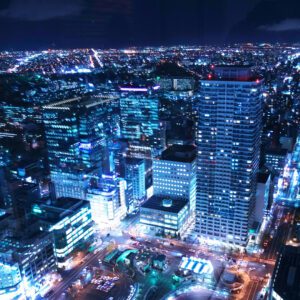

Day 8 (last day)
- Hokkaido University Faculty of Agriculture Second Farm
Sapporo Agricultural School No. 2 Farm was established in 1877 as a model farm. Nine facilities such as offices are national important cultural property.


- Former Hokkaido Government Office Building
It is a neo-baroque building built in 1888. It is a national important cultural property.
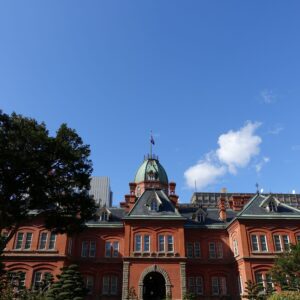

- Hokkaido University Faculty of Agriculture Botanical Garden
It is the second oldest botanical garden in Japan, which opened in 1886. It is a national important cultural property.
- Sapporo Archives Museum (former Sapporo Court of Appeals)
Built in 1926, it is a national important cultural property.
- Former Sapporo Agricultural School Performance Hall (Clock Tower)
It was built in 1878 as a performance hall (indoor gymnasium) in the middle of the schoolyard of Sapporo Agricultural College. It is a national important cultural property.
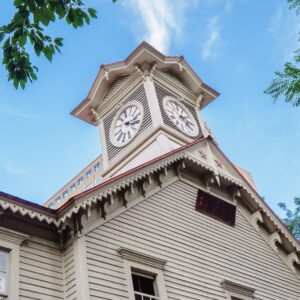

Lunch
We will eat “Soup Curry”, which is a “local dishes loved by nation” announced by the Ministry of Agriculture, Forestry and Fisheries. I have never been there, but I was very attracted to “CURRY YA! CONG” (Tabelog famous 100 restaurants, 6 minutes walk from Toyohira Bridge), so I would like to introduce it.
- Hohei Kan
Hohei Kan was completed in 1881 as an accommodation facility. It is a national important cultural property.
- Hassoan
It is said that it was designed by Kobori Enshu, a tea master who was a daimyo in the early Edo period (the lord of Bitchu Matsuyama Castle and later the lord of the Komuro feudal clan in Omi Province). The tea room in Nagahama City, Shiga Prefecture was relocated to Sapporo in 1919. It is a national important cultural property.
- Sapporo Fushimi Inari Shrine
It was founded in 1884. It is known for its 26 red torii gates.
- the summit of Mt. Moiwa
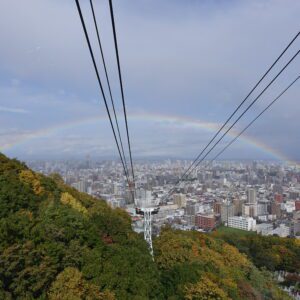

Dinner
We will eat “Jingisukan“ . It is a local dish of Hokkaido listed in the “100 selections of local favorites” selected by the Ministry of Agriculture, Forestry and Fisheries.
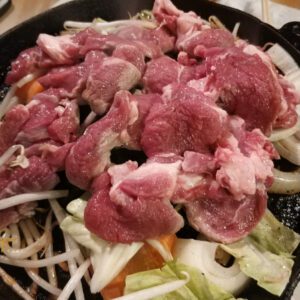

In 3 days, we could eat “Chanchan-yaki”, “Ishikari Nabe”, “Jingisukan” of Hokkaido’s “local cuisine”, “Uni-Ikura-don”, “Soup curry” of “Local dishes loved by nation” , seasonal seafood in September ( yellowtail, flatfish, salmon, pacific saury, atka mackerel, Japanese flying squid, and kelp) and “Tomakomaki no Hokki (Sakhalin surf clam)”, and “Pacific coastal Matsukawa-garei (flatfish)”.
(Note: The departure / arrival times and fares for transportation listed in the text are as of the time of writing the BLOG. They may change in the future, so please check for yourself when you go on a trip.)
